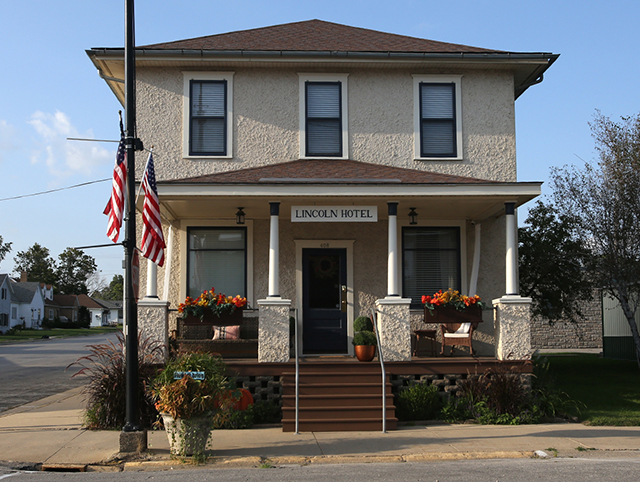
The National Register of Historic Places
The National Register of Historic Places, or NRHP, is a federal program administered by the US National Parks Service (NPS). It was created in 1966 as part of the National Historic Preservation Act (NHPA) to recognize cultural resources that, whether intentionally or accidentally, had withstood the tests of time and human action. No legal obligations – for owners – are imposed by being listed on the NRHP. For them, it is an honorific program.
The NRHP places nominations and listings into one of five categories: buildings, structures, objects, sites, and districts. The most common listings are buildings and districts, or groups of buildings (more on structures, objects, and sites below).
The NRHP recognizes four kinds of historic value: association with significant events, association with significant people, outstanding exemplars of architecture, and/or the potential to yield important historical or prehistorical information.
The NRHP places nominations and listings into one of five categories: buildings, structures, objects, sites, and districts. The most common listings are buildings and districts, or groups of buildings (more on structures, objects, and sites below).
Nominations to the NRHP document many aspects of a place, including its current condition, remaining design features that indicate that it is historic, its own history (in the case of a building, for example, documentation of expansions or renovations), and its historic context. Nominations provide this information textually and with images such as maps and photographs. They are written using a wide variety of historic resources – fire insurance maps, newspapers, Census and other genealogical records, any available historic images, archival collections, secondary sources produced by historians, and even other nominations.
Brick Street Historic District Woodbine, Iowa
The NRHP requires that nominated properties have integrity – that they themselves convey their historic character and significance themselves. The NPS breaks integrity down into seven elements: location, design, setting, materials, workmanship, feeling, and association. Some of these elements are more subjective than others, but over the years the NPS has written many National Register Bulletins now available online, which explain their meaning, the procedure for preparing nominations, and other questions related to historic preservation.
In addition to recognizing historicity, the NHRP provides a framework for how public resources and regulations are allowed to affect the United States’ cultural resources. Whether a place is listed or eligible for listing informs the federal government’s actions, as do the professional and work standards set forth by the Secretary of the Interior, who oversees the NPS. The Secretary of the Interior’s Standards guide projects that preserve, rehabilitate, restore, and/or reconstruct historic cultural resources. As with the National Register Bulletins, these are available online.
A private owner of a place listed on the NHRP is most likely to encounter regulation when they obtain or try to obtain a financial benefit from the federal, state, or local government. At the federal level, a 20% federal income tax credit is available to recoup up to 20% of the money spent on a certified project to rehabilitate an income-producing building that is certified as historic by being listed individually on the NRHP or by being in an NRHP historic district. The State of Iowa offers a 25% tax credit for “qualified rehabilitation expenditures” to preserve historic buildings’ architectural elements that give them their historic character. Counties also may offer exemptions from a few years of property tax increases that result from the value added to historic properties by performing rehabilitation projects. In all cases, these benefits must be applied for through an officially designated procedure. The projects they support must be “sensitive” according to the Secretary of the Interior’s Standards. And the affected places must be recognized as historic.
The NHPA imposes similar obligations on the federal government itself – and the spending of federal money or issuing of federal permits. According to Section 106 of the NHPA, federal “undertakings” – projects that spend federal money or use federal permits, including state, local, and private projects – must evaluate the effect of their proposed work on any places listed on the NRHP or that are eligible to be listed on it, and avoid or mitigate adverse effects. Section 110 of the NHPA requires federal agencies to manage the historic preservation of their own resources using the guidelines of the NRHP. Finally, section 402 of the NHPA requires the Department of State to care for the historic preservation of US-held sites abroad if they are either a UNESCO World Heritage Site or eligible for the NHRP equivalent of the country in which they exist.
The “structures” category is one of the harder ones to define. It is essentially human-made things, some of their buildings or building-like, that were built for some function other than providing human shelter. The NPS gives some helpful examples, including vehicles; agricultural infrastructure like irrigation systems, canals, and windmills; and, importantly for Prairie Rivers’ survey of historic resources in the Lincoln Highway Heritage Byway, bridges. “Objects” is a similar category, but the things defined in this way have primarily aesthetic value. They are artistic. “Sites” are places that are historic whether a building associated with the important historical events that happened there exists or not, or whether it ever existed. Commonly, these are archeological digs or places where archeologists would expect to find artifacts.
Author Michael Belding is the oral history program manager for the Iowa State University Special Collections and University Archives. He previously worked as an architectural historian for the City of Mobile, Alabama’s Historic Development Commission. Currently, Belding is a Ph.D. candidate in Rural, Agricultural, Technological, and Environmental History and is working with Prairie Rivers of Iowa to help assess the condition of the approximately 319 properties listed on the National Register of Historic Places along the Lincoln Highway Heritage Byway (LHHB) in Iowa.





